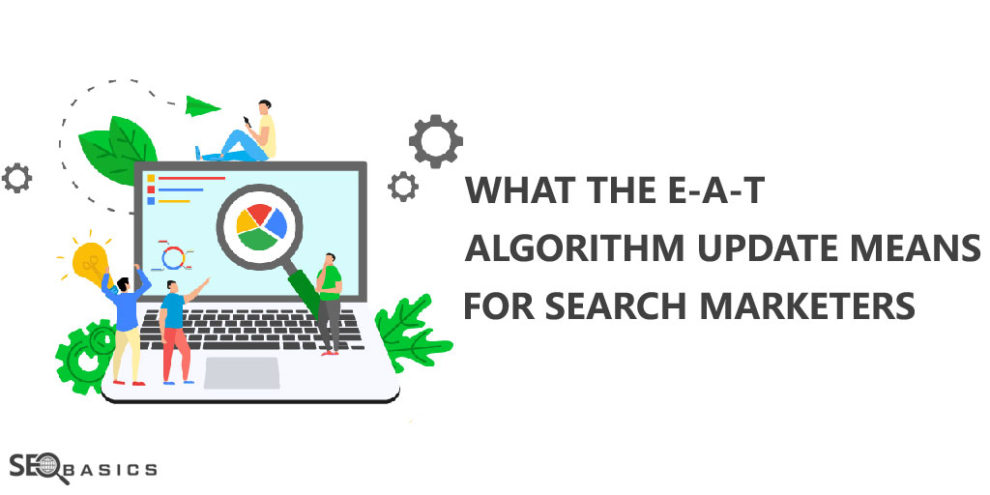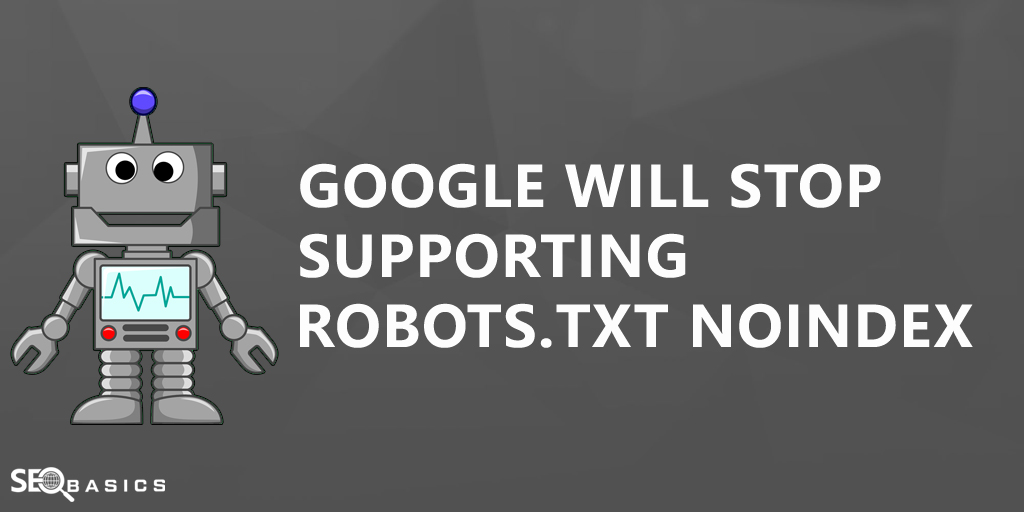Google’s algorithm is constantly changing. They add public and hidden updates that change how websites are indexed and ranked.
For example, have you ever checked Google Analytics and saw a large dip or jump in traffic? It was probably an algorithm update.
Not keeping up to date on what works in SEO will result in a lackluster performance, fewer rankings, and low organic traffic.
And, one of the hottest topics in search marketing right now is the EAT algorithm update.
It affected many websites and is an important factor in the future of search engines.
But, what is it and how can you take advantage of it?
Keep reading to learn.
What was the EAT Algorithm Update?
While some believe that the EAT algorithm update is a brand new addition, it isn’t.
In fact, it was originally released in August of 2018, making it nearly two years old.
Nonetheless, there are still many search marketers who are unaware of this update.
Firstly, EAT stands for:
-
Expertise: Is the website a reputable source of information and do they have the credentials to back up their claims? Google wants experts talking about subjects.
-
Authoritativeness: The credibility of the website and authors, such as reviews, testimonials, domain rank, backlinks, etc.
-
Trustworthiness: Site security, online reputation, and user experience.
In sum, the EAT guidelines determine if a website is a trusted source of information, written by experts, and can be relied on for truthful claims.
At the end of the day, Google wants the best resources for their users.
Thus they are screening sites and their background more seriously.
In particular, the EAT update affected YMYL websites.
That stands for your money or your life.
These websites typically involve finance, health, dieting, or other topics that would directly impact readers’ life and security.
Despite if you’re in these markets or not, EAT will still affect your business.
Let’s talk about what to do next.
How to Take Advantage of EAT Algorithm
These are a few strategies marketers can deploy to align with the EAT algorithm and begin improving search performance.
1. Create a Professional About Page
The about page of a website is much more important than you think.
Most webmasters write a couple of hundred words max about their company, history, and values.
That’s it.
However, it needs to be much more elaborate after the release of the EAT update.
This is because the about page of a website is the perfect opportunity to display all three traits: expertise, authority, and trustworthiness.
You should optimize the about section of your website to display awards you’ve won, positive press, testimonials, and academic titles.
All of these points to you being a trustworthy source of information.
Look how Salesforce displays profiles of their executives:
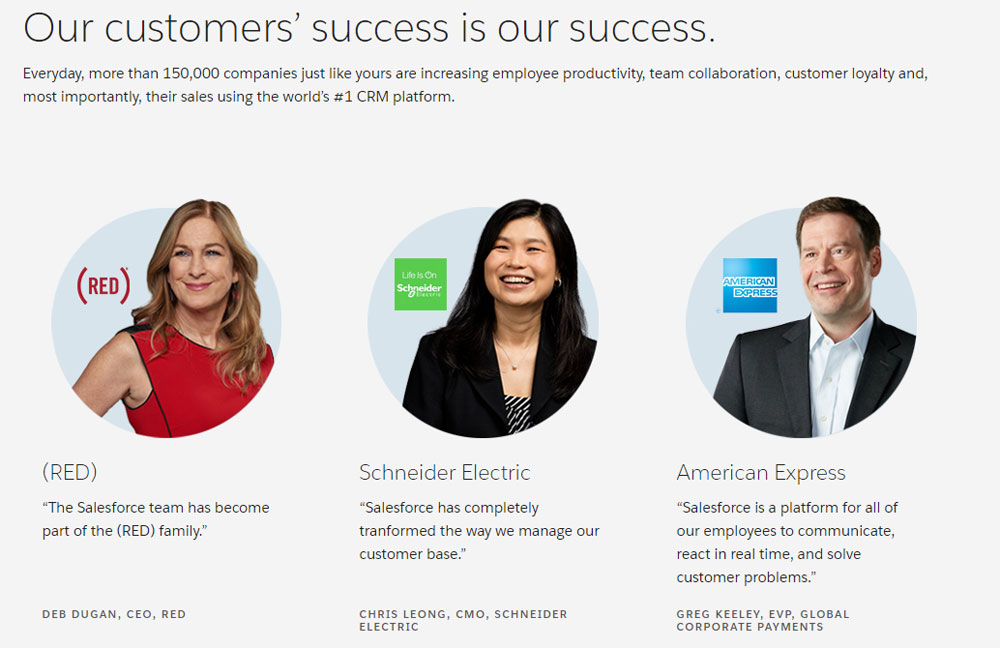
They also show off awards they’ve received for their outstanding product and services.
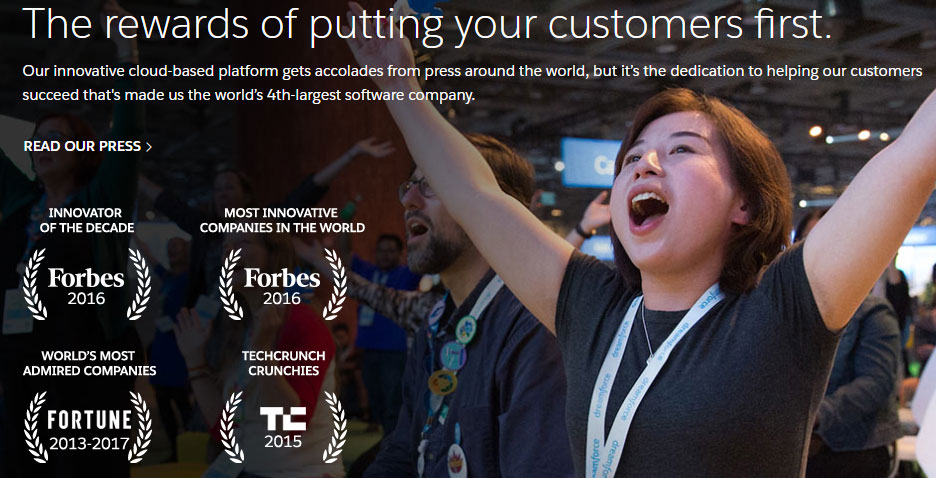
This shows to both users and search engine crawlers they are on a trustworthy website.
2. Take Reputation Management Seriously
Google doesn’t just pay attention to what’s on your website, but what is found all over the internet.
After all, they love brands.
And, brands are omnichannel.
They’re on social media, news sites, review sites, and more.
This is what we also call reputation management: managing a company’s reputation across many different platforms and channels.
If Google’s algorithm can see that you’re active all over the internet and receiving a positive response, it will improve how it views you, especially through the lens of EAT.
The first step is to audit and generate more press coverage.
One of the best ways to do so is by using a service like Help a Reporter Out which allows you to give responses to reporters in exchange for free exposure.
Simply sign up for an account and respond to the daily emails with your credentials.
Large publications like Forbes and Business.com use it frequently.

Managing reviews is another important practice.
These can be found all over the web, including websites like Google, Yelp, and G2.
Ensure that you are maximizing the number of positive reviews you receive by improving your product and customer service.
Respond to every review, as well.
Guest posting, which is a common form of link building, is another strategy to adopt.
It plays a role in public relations and branding.
This is because it places your company on different websites and showcases your knowledge about particular topics.
You can search for guest post opportunities by using searches like “niche + submit a guest post” on Google like this:
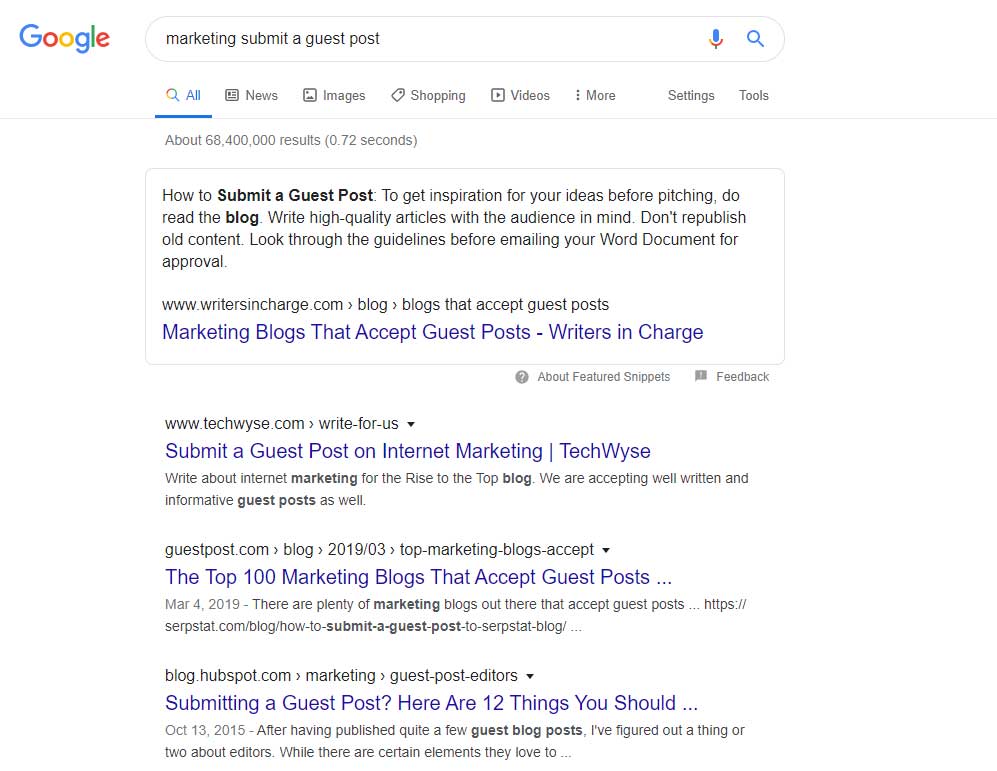
Visit these websites and follow their submission guidelines carefully.
They will typically include rules regarding word count, anchor text, images, and more.
That brings me to my next point.
3. Content Quality is a Must
One of Google’s most important ranking factors has always been the quality of content found on a website.
At the end of the day, they want results that answer the user’s questions.
Thus it plays a role in the authority and trustworthiness of a website.
But, what makes content high quality versus low quality?
Firstly, word count is a factor to consider.
Many studies have found that the first result on Google ranges up to 1,890 words long.
Long-form content simply provides more information, data, tools, and resources, making it more useful.
Secondly, it should be formatted to improve readability.
This is done by using header tags to separate major points and sub-points.
Bullets and lists also help readers digest information quicker, as well.
I also suggest shortening paragraphs and sentences to make content digestible.
Lastly, make it unique.
Study the first page of search results to gauge what other websites are publishing.
Take notes of what could be improved and provide unique insight that readers can’t find anywhere else.
4. Optimize the User Experience of Your Website
Can users navigate through your website quickly and easily?
If not, it may be time to audit it to determine what can be improved.
Beginning a few years ago, Google began weighing UX based metrics more heavily with their RankBrain update.
But, how can you determine the UX quality of a website?
I suggest running your domain through a free tool like GTMetrix to analyze page speed and other performance metrics.
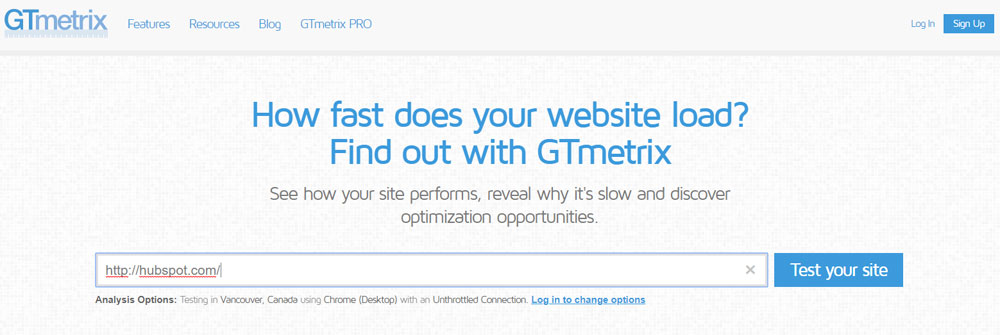
After allowing the tool to scan your website, you will be presented with the following page:
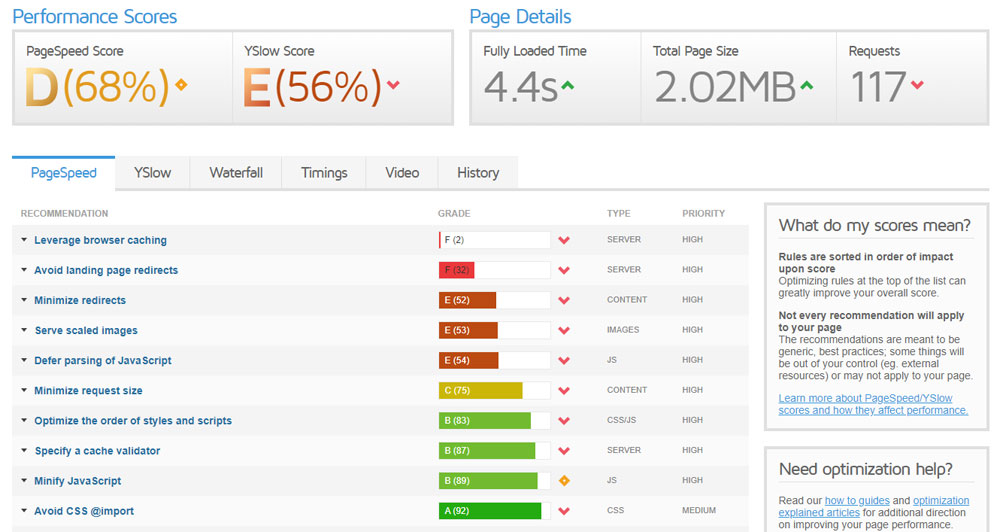
While a lot of this information can seem intimidating, it’s not difficult to fix.
For instance, WordPress has many plugins that will improve page speed and common UX issues.
These include browser caching, image compression, and CSS minification.
5. Don’t Stop Building High-Quality Backlinks
Backlinks are like a voting system for search engines.
They help decipher which websites are believed to be the most popular and reputable by the number of links they receive.
Marketers can take advantage of this by creating a backlink building strategy and scaling it.
As I mentioned before, guest posting is a great way to do so.
However, there are many other strategies to use.
One of which is the Skyscraper technique coined by Brian Dean.
This approach involves finding viral pieces of content, improving upon them, and contacting referring domains for a link.
For example, use a tool like BuzzSumo by entering a keyword on the homepage.
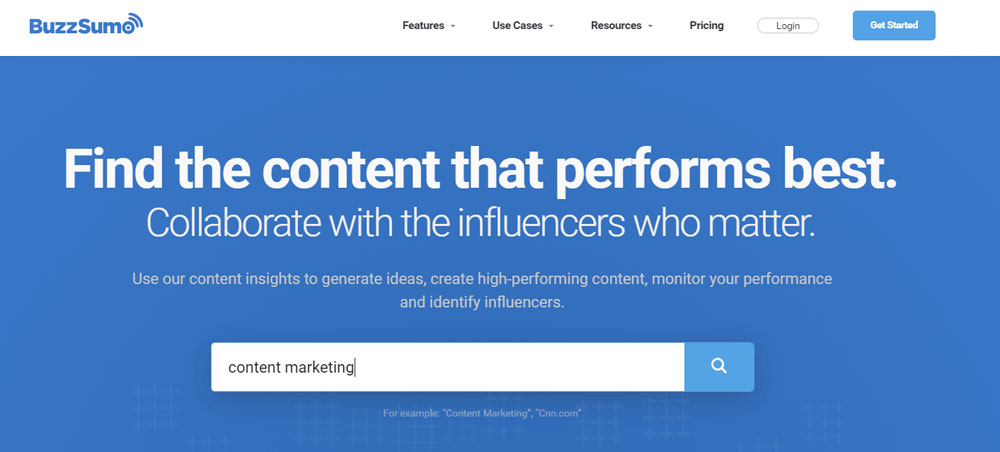
This will display all of the most popular content for any niche to get an idea of what’s working and what readers want.
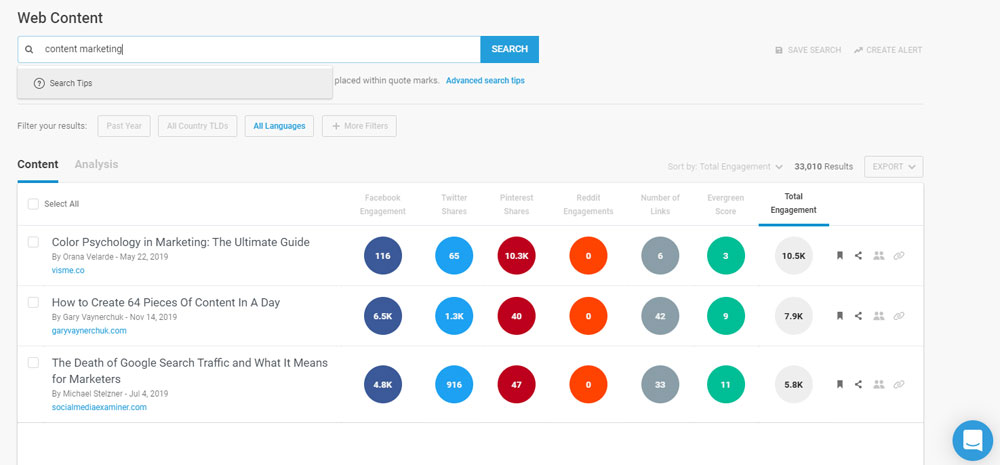
You can then click through to these websites and take note of aspects like:
- Word count
- Images
- Major points
- Internal/external links
- Suggested tools
- Writing style
- Etc.
Then, make it better.
Did they write 2,000 words?
Write 2,500.
Did they list five tools?
List ten. You get the idea.
After you’ve created a better piece of content, it’s time to find out which websites are linking to the original piece of content.
You can use a backlink checker like this one to do so.
Paste in the URL and you’ll see all of the referring domains.
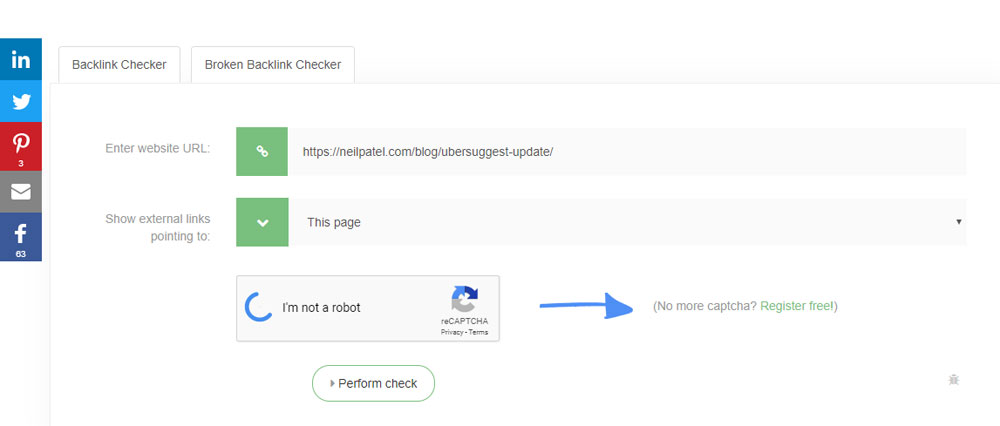
Visit these websites and find their contact form.
Send a personalized template like this one to suggest replacing the original article with yours:
Good morning,
I really enjoyed your article {Article name}. I especially enjoyed the section on {Subject}.
However, I noticed that you linked to {Competitor URL} under {Header}. I’ve recently published a much more in-depth article to help your readers if you’d like to update the link.
Feel free to check it out here: {Url}
Cheers,
{Name}
Ensure that you follow up on a regular basis if you do not receive a response.
Webmasters are busy individuals and may not have the opportunity to respond to the first email.
Conclusion
The EAT algorithm update is one of Google’s many updates they’ve released.
It’s also had one of the largest impacts on rankings and traffic.
That’s why it’s important to understand what it is and how to adjust your site accordingly.
The update had a focus on auditing the expertise, authority, and trustworthiness of sites.
Do they have the credentials and experience to be speaking about what they do?
Having this information clearly displayed helps search engines understand whether or not you’re capable of speaking on the complex subject matter.
Niches in health and finance tend to have the largest impact because of their serious nature.
However, there are steps all webmasters can take to enhance their search performance with this EAT algorithm update.
The first step is to optimize your about page.
Include as many awards, achievements, and press coverage as possible.
Create profiles for team members if possible, too.
Then, focus on managing your reputation across all channels.
This includes social media, press coverage, and reviews.
Building links through techniques like guest posting applies here, too.
Publish high-quality content that provides actionable and practical information for readers.
Link out to articles, studies, and data that are all trustworthy.
Similarly, optimize the experience of your website through increasing page speed, enabling caching, etc.
Doing all of these things will improve the authority of your website and help you climb up the SERPs!



